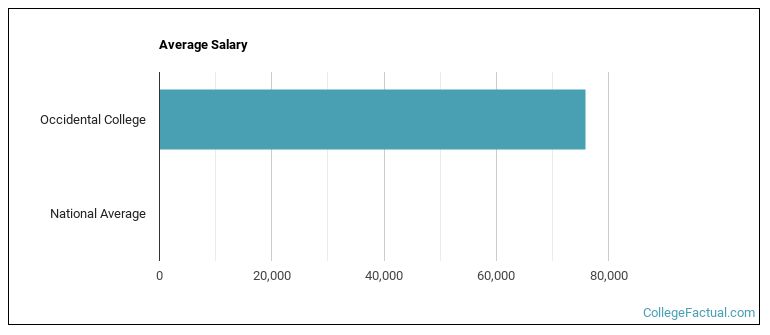 by our College Data Analytics Team
by our College Data Analytics TeamExplore the best ranked schools for the programs you are most interested in.
Oxy landed the #667 spot in College Factual's 2025 ranking of best overall colleges in the United States. The higher ed experts analyzed 2,152 colleges and universities across the nation to determine this ranking.
Oxy is also ranked #83 out of 161 schools in California.
Occidental College has an acceptance rate of 39%, which means the school is serious about who it admits. Take your time in putting together a strong application that highlights why you are a good fit for Oxy.
About 26% of students accepted to Oxy submitted their SAT scores. When looking at the 25th through the 75th percentile, SAT Evidence-Based Reading and Writing scores ranged between 690 and 750. Math scores were between 680 and 760.
The student to faculty ratio at Oxy is an impressive 9 to 1. That's quite good when you compare it to the national average of 15 to 1. This is a good sign that students at the school will have more opportunities for one-on-one interactions with their professors.
When estimating how much access students will have to their teachers, some people like to look at what percentage of faculty members are full time. This is because part-time teachers may not have as much time to spend on campus as their full-time counterparts.
The full-time faculty percentage at Occidental College is 71%. This is higher than the national average of 47%.
The freshmen retention rate of 89% tells us that most first-year, full-time students like Occidental College enough to come back for another year. This is a fair bit higher than the national average of 68%. That's certainly something to check off in the good column about the school.
The on-time graduation rate for someone pursuing a bachelor's degree is typically four years. This rate at Oxy for first-time, full-time students is 78%, which is better than the national average of 33.3%.
Find out more about the retention and graduation rates at Occidental College.
During the 2017-2018 academic year, there were 1,839 undergraduates at Oxy with 1,791 being full-time and 48 being part-time.
| $0-30 K | $30K-48K | $48-75 | $75-110K | $110K + |
|---|---|---|---|---|
| $15,674 | $16,201 | $25,473 | $28,007 | $52,991 |
The net price is calculated by adding tuition, room, board and other costs and subtracting financial aid.Note that the net price is typically less than the published for a school. For more information on the sticker price of Oxy, see our tuition and fees and room and board pages.
While almost two-thirds of students nationwide take out loans to pay for college, the percentage may be quite different for the school you plan on attending. At Oxy, approximately 43% of students took out student loans averaging $8,272 a year. That adds up to $33,088 over four years for those students.

Get more details about the location of Occidental College.

Contact details for Oxy are given below.
| Contact Details | |
|---|---|
| Address: | 1600 Campus Rd, Los Angeles, CA 90041-3392 |
| Phone: | 323-259-2500 |
| Website: | https://www.oxy.edu/ |
| Most Popular Majors | Bachelor’s Degrees | Average Salary of Graduates |
|---|---|---|
| Economics | 85 | $64,885 |
| International Relations & National Security | 53 | $35,231 |
| General Biology | 40 | $28,691 |
| Child Development & Psychology | 39 | NA |
| Computer Science | 36 | $63,845 |
| Linguistics & Comparative Literature | 23 | NA |
| Cognitive Science | 23 | NA |
| Political Science & Government | 22 | $45,175 |
| Film, Video & Photographic Arts | 22 | $30,526 |
| Biochemistry, Biophysics & Molecular Biology | 20 | NA |
If you’re considering Occidental College, here are some more schools you may be interested in knowing more about.
Curious on how these schools stack up against Oxy? Pit them head to head with College Combat, our free interactive tool that lets you compare college on the features that matter most to you!
Footnotes
*The racial-ethnic minorities count is calculated by taking the total number of students and subtracting white students, international students, and students whose race/ethnicity was unknown. This number is then divided by the total number of students at the school to obtain the racial-ethnic minorities percentage.
References
More about our data sources and methodologies.